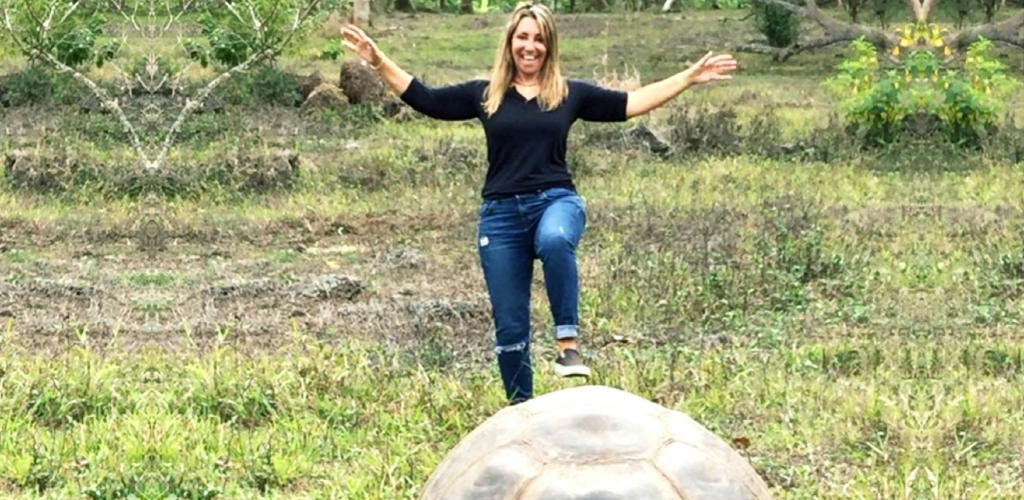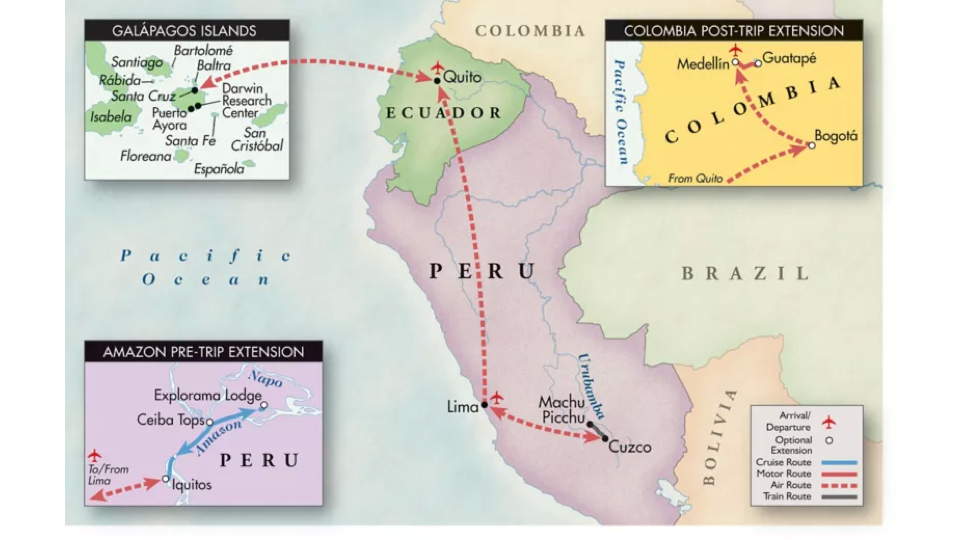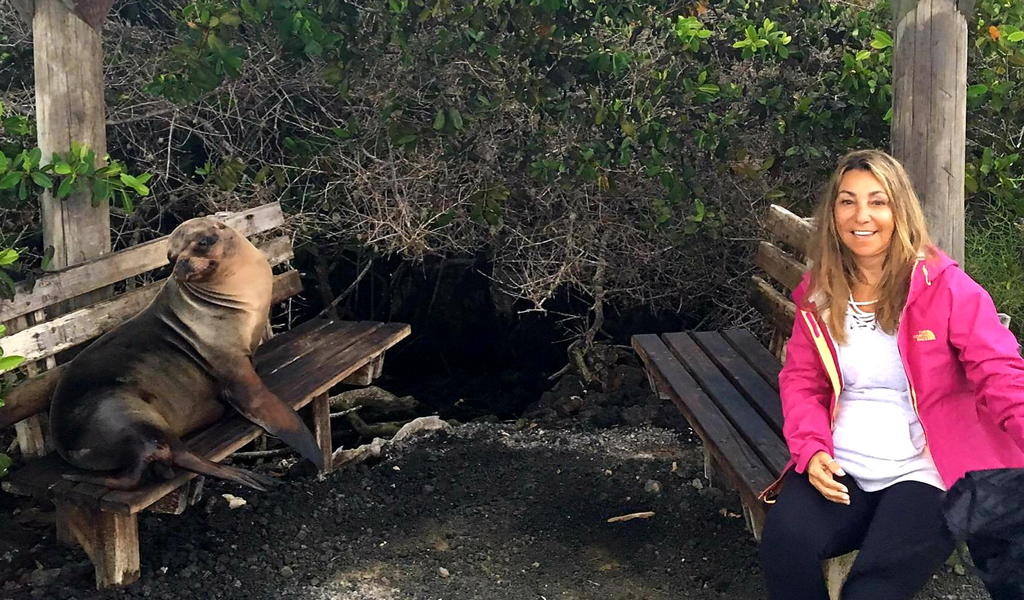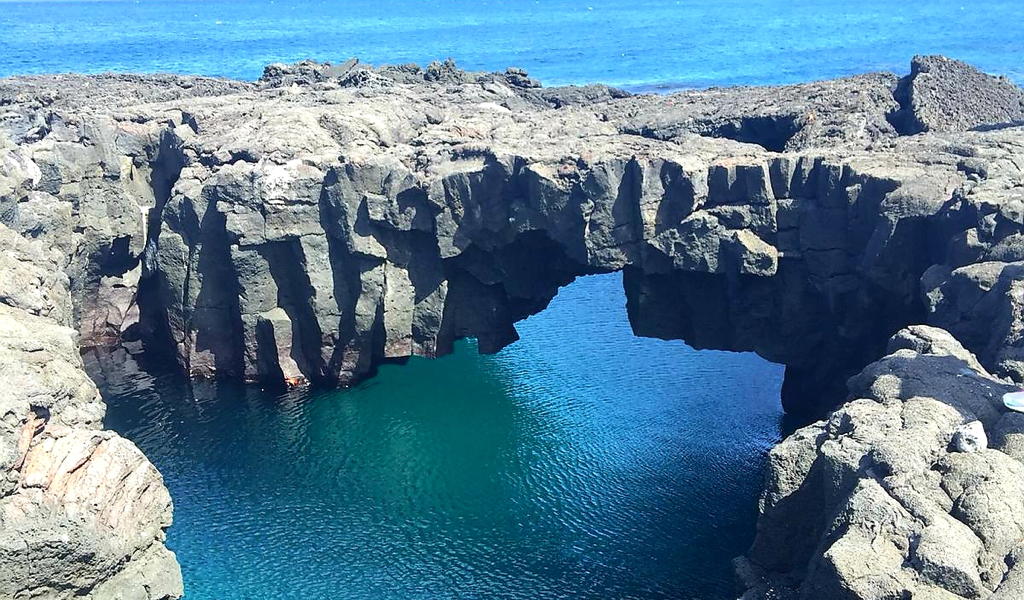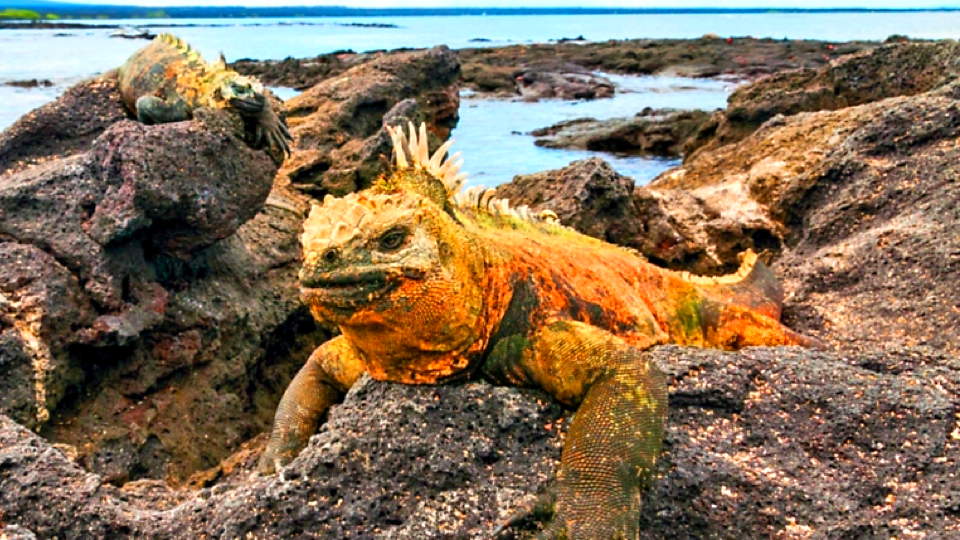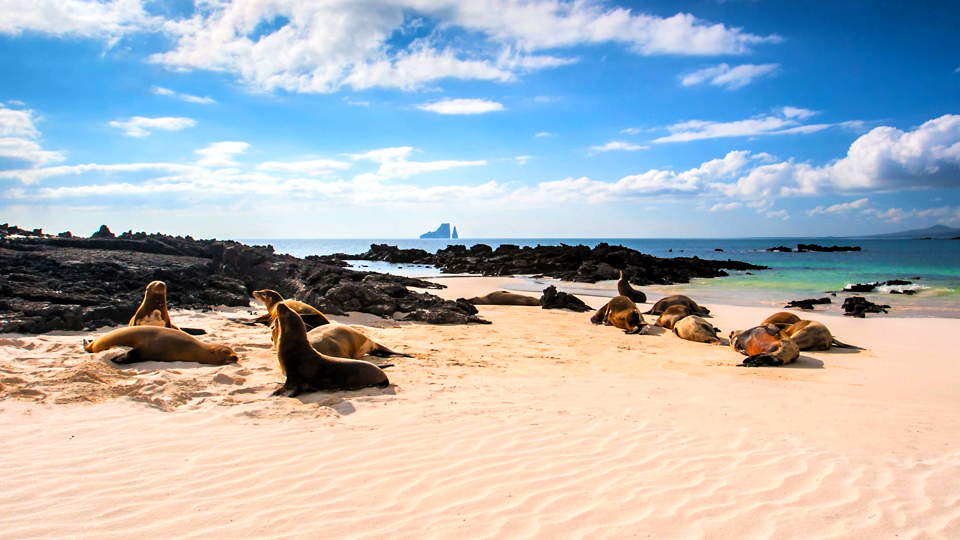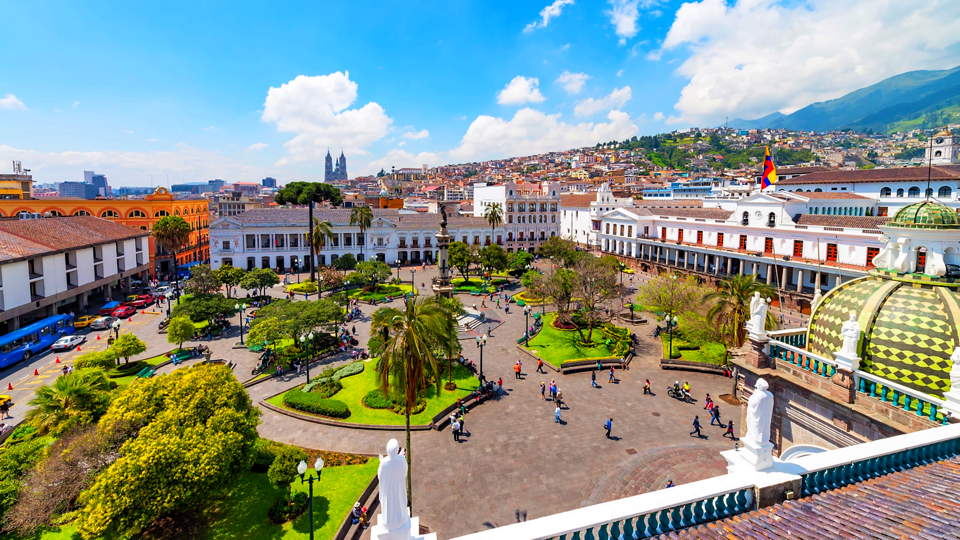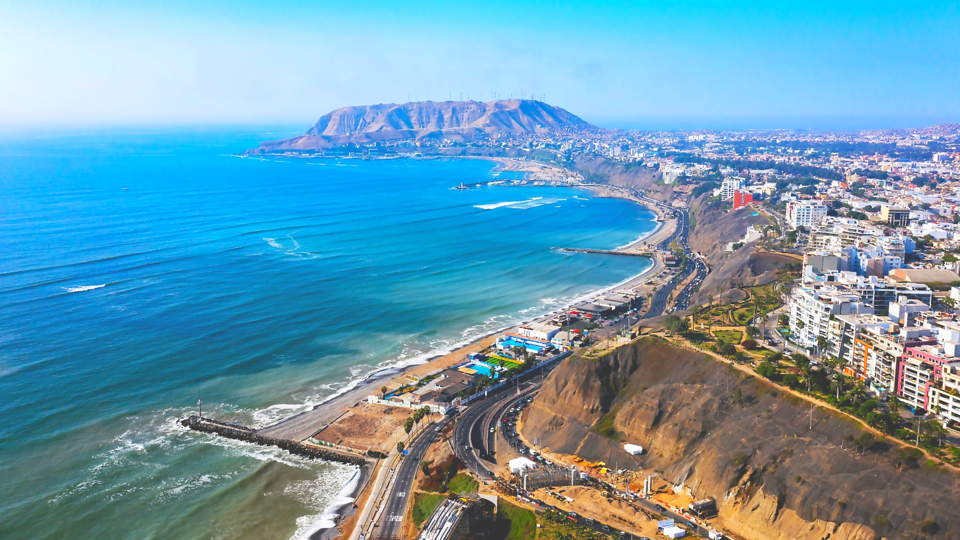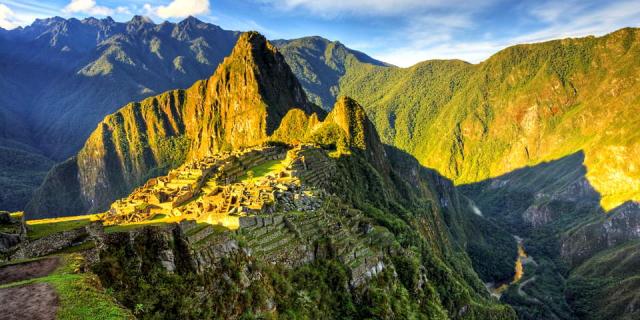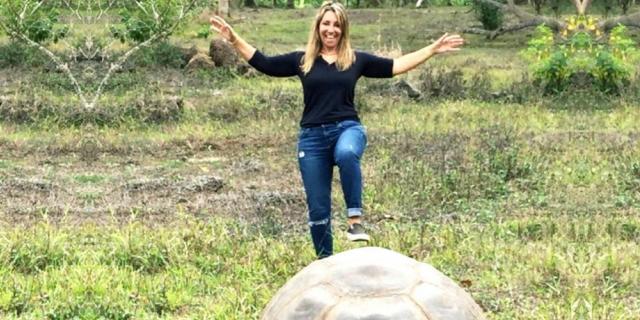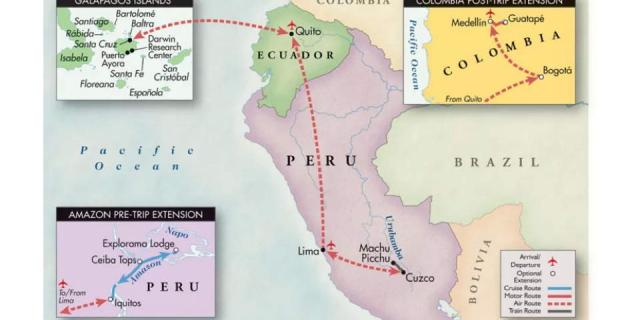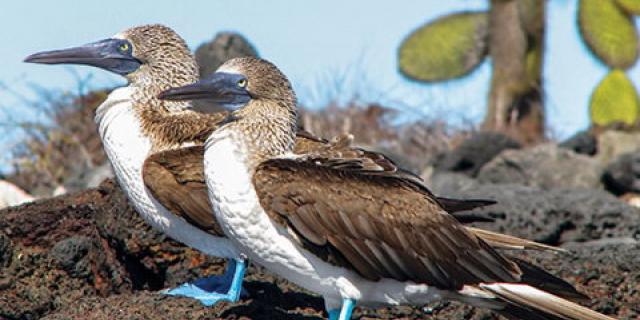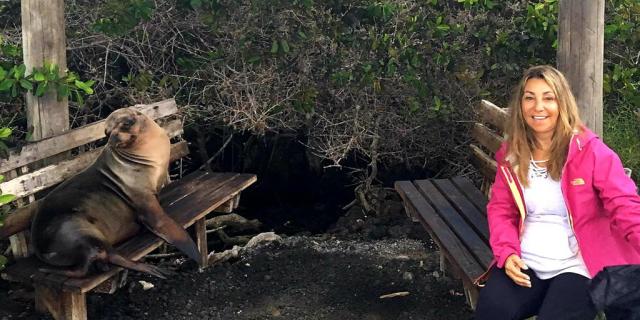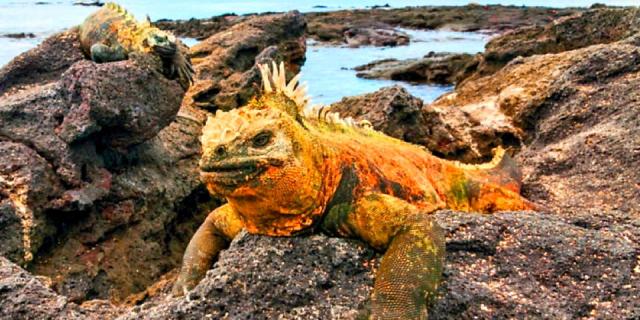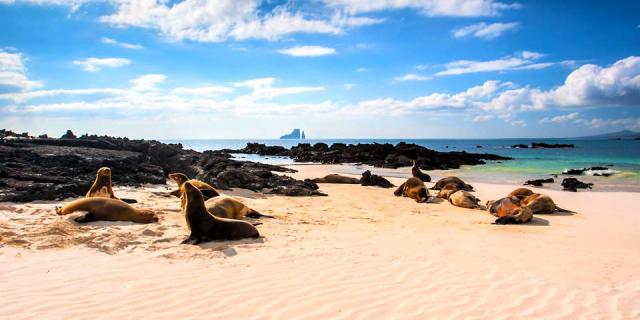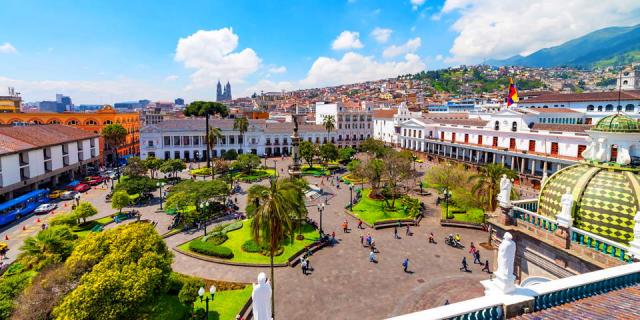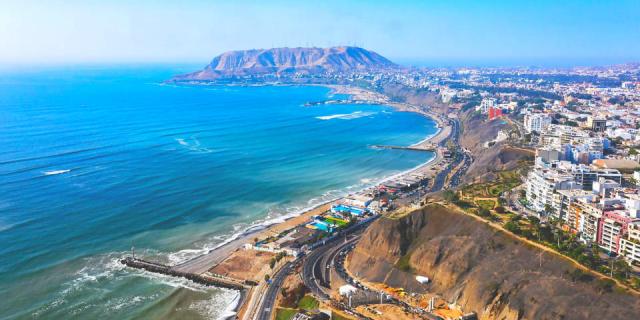- Services of two local Trip Experience Leaders—one in Peru & a certified Galápagos naturalist on the islands—with your small group of 8-16 travelers (average of 13)—guaranteed
- International airfare, airport transfers, government taxes, fees, and airline fuel surcharges unless you choose to make your own air arrangements
- All land transportation and 5 internal flights
- Accommodations for 3 nights in Lima, 2 nights in the Sacred Valley, 2 nights in Aguas Calientes, 2 nights in Cuzco, 3 nights in Quito, and 4 nights aboard a privately chartered small ship
- 38 meals: 16 breakfasts, 12 lunches, and 10 dinners
- 21 guided tours and cultural experiences, including 2 days in Machu Picchu, Galápagos shore excursions, and all park fees
- Gratuities for local guides, drivers, ship crew, and luggage porters
- 5% Frequent Traveler Credit toward your next trip
DAY 1
Depart U.S. • Arrive Lima, Peru Destination: Lima Accommodations: José Antonio Lima Hotel or similar Depart the U.S. today on an international flight to Lima, Peru, arriving late in the evening or early morning. An O.A.T. representative will greet you at the airport and assist with the transfer to your hotel.
DAY 2
Lima • Local interaction Destination: Lima Meals included: B D Accommodations: José Antonio Lima Hotel or similar
Breakfast: At the hotel.
Morning: At leisure. You are free to relax and enjoy the amenities of your centrally-located hotel. Or venture out into the city for a café con leche (coffee with milk) and sightseeing.
You’ll gather with your small group later this morning, including travelers who took our optional The Peruvian Amazon: Treks, Cruises & Indigenous Communities or Landscapes of Bolivia: La Paz, Lake Titicaca & the Uyuni Salt Flats pre-trip extensions and those who arrived early in Lima before the main adventure, at a Welcome Briefing held at the hotel.
Then, we'll set off to explore Lima's Miraflores district on an orientation walk. This stylish, modern neighborhood is a cultural and artistic center full of small cafés, fine shops, and art galleries. We'll stroll through boulevards, plazas, and even the Miraflores malecón (boardwalk), a six-mile long walkway that stretches along the Pacific Ocean.
Lunch: On your own. Perhaps you will try Lima's most famous dish, ceviche, raw fish "cooked" in citrus juices. Your Trip Experience Leader will provide recommendations for restaurants in the area.
Afternoon: Enjoy a free afternoon to explore on your own. Then, our group will reconvene at the hotel for a short walk to the Parque Kennedy, a park in central Lima named for American president John F. Kennedy in honor of the aid he gave Peru to promote democracy during his presidency. Here, you'll witness a reality of life in Peru—school-age street vendors selling cigarettes, food, water, and other basic items.
Dinner: Enjoy a Welcome Dinner at a local restaurant, and experience an authentic taste of Lima with your Trip Experience Leader and fellow travelers.
Evening: Spend the evening as you prefer. You may choose to venture out on your own to experience the contrast of Lima’s high-rises alongside colonial buildings and the way they’re illuminated at night.
DAY 3
Explore Lima • Fish market • Larco Museum Destination: Lima Meals included: B L Accommodations: José Antonio Lima Hotel or similar
Breakfast: At the hotel.
Morning: Drive to the Chorrillos fish market, where we'll be met by a local guide and interact with local fishermen who make their living off of small-scale artisanal fishing operations in the wharf as they start their day. This market is a favorite among locals as the catch is fresh and includes fish that inhabit the waters immediately surrounding Lima. You'll learn about what life is like for these men who work adjacent to one of Lima's most wealthy areas (Miraflores), and have the opportunity to ask them questions.
Then, drive to the Larco Museum, known for its privately-owned collection of pre-Columbian artifacts and artwork, including thousands of ceramic objects. The museum is housed in a former viceroy's mansion dating back to the 18th century, and is built on the site of a seventh-century temple. We’ll browse the collection on a guided tour.
Next, drive to downtown Lima, where we'll begin a walking tour with our Trip Experience Leader. Together, we'll explore Lima's colonial streets and architecture—evidence of the city's Spanish heritage. We’ll walk through the Historic Centre of Lima, where we can witness landmarks such as the Archbishop Palace, the Museum of Italian Art, and the House of Aliaga.
Lunch: At a local restaurant.
Afternoon: We'll continue exploring Lima's historic central area in the company of our local Trip Experience Leader. There, we'll have the opportunity to speak with local guards who patrol the streets, searching for homeless or neglected children. These guards are not to be confused with police officers—rather, they are similar to social workers and specialize in the handling of youth poverty. Take this opportunity to ask any questions you may have, such as the structural and regulatory measures in place to deal with these issues.
After our tour, you'll have the option to either head back to hotel or venture to the vibrant neighborhoods of Miraflores and Barranco, residential and shopping districts of particular interest in Lima. Rub elbows with locals as they go about their daily routine, wander in and out of shops, and enjoy the lively, bustling environment here.
Dinner: On your own. Perhaps you’ll opt to continue your quest for authentic Peruvian cuisine, such as Lomo Saltado, a classic hearty dish of stir-fry beef and potatoes. Or maybe you'll try a Pisco Sour, a South American favorite cocktail made from Pisco liquor, citrus juices, simple syrup, and in some cases, egg whites and Angostura bitters.
Evening: Rest up for tomorrow’s adventures or continue exploring on your own. If you chose the latter, perhaps you’ll head back into Miraflores to enjoy live music with a chilcano (brandy cocktail) or chicha morada (purple corn-based cocktail) beverage in hand.
DAY 4
Fly to Cuzco • Controversial Topic: Coca’s role in local culture and cocaine production • The Sacred Valley Destination: The Sacred Valley Meals included: B L D Accommodations: Villa Urubamba or similar
Breakfast: At the hotel.
Morning: Drive to Lima’s airport for your flight to Cuzco, arriving in the early afternoon. After we land, we’ll drive to the Sacred Valley with stops along the way.
Lunch: We'll enjoy a boxed lunch en route to the Sacred Valley.
Afternoon: On the way to our hotel, we’ll meet a local vendor of fruits, coffee, and coca leaves. This vendor will be our guest expert for a conversation about the Controversial Topic of coca production in Peru, and the struggle to balance the plant’s traditional role in society with its high value on the black market as a key ingredient in cocaine.
Coca has been a staple of Peruvian culture for millennia. Locals, especially in the Andean areas, use the leaves in religious rituals and also chew them to alleviate fatigue, postpone hunger, and prevent altitude sickness. Some research even backs up the traditional wisdom: When taken in small doses, coca has been found to be both psychologically beneficial and nutrient rich.
However, while coca is legal for personal use in Peru, the plant’s role in cocaine production has put it in the crosshairs of international lawmakers. In 1961, the United Nations listed the coca leaf as a Schedule 1 drug, placing it in the same category as cocaine and heroin. The convention mandated that coca chewing be abolished and that all illegally cultivated coca bushes be destroyed. Of all the coca grown in Peru today, nearly 90% winds up in the illegal drug trade.
As a purveyor of legal coca, our guest expert is intimately familiar with the challenges of navigating this controversy, and can help us to understand coca’s role in Peruvian life and explaining how the government’s crackdown on coca production has impacted her family and neighbors. We’ll also have the opportunity to try some coca for ourselves to better understand why it is so central to life at high altitudes.
After our conversation, we’ll continue driving to our hotel, where we’ll check in and take an orientation walk around the area with our Trip Experience Leader.
Dinner: At the hotel.
Evening: Your evening is free to relax and enjoy the amenities at your hotel or explore Urubamba.
DAY 5
Explore the Sacred Valley • Experience A Day in the Life of Urubamba village • Grand Circle Foundation: School Visit • Home-Hosted Lunch Destination: The Sacred Valley Meals included: B L D Accommodations: Villa Urubamba or similar
Activity Note: We will spend the day at elevations above 9,000 feet. We recommend staying hydrated while at high altitude. If today's school visit falls on a weekend or holiday when school is not in session, an alternate activity may be arranged.
Breakfast: At the hotel.
Morning: Today we will experience A Day in the Life of Urubamba, a town of around 2,700 people and the largest community in the Sacred Valley. Our immersive cultural experience begins when we arrive at Urubamba’s market, where the town’s locals do their daily shopping and conduct their business. Here, we’ll get a true local experience as our Trip Experience Leader gives us a few soles (local currency) and sends us off with an assignment—to shop for ingredients that we’ll use later to prepare a meal when we meet a local family for a Home-Hosted Lunch. To guide us, we'll be joined by a member of the family with whom we'll later dine.
As we navigate the market stalls, we’ll see for ourselves the wide variety of goods on display in traditional Andean markets such as these. Most people in this region don't have a means of keeping their food cool, so we might see how locals determine the freshness of various products. We may also learn how certain herbs are used to naturally preserve food.
We’ll head to our next stop via a unique mode of local transportation—a traditional moto-taxi, a colorful, tiny, three-wheeled vehicle, similar to the tuk-tuks of Southeast Asia (this activity is weather dependent). We’ll ride through Urubamba’s narrow streets just like a local, enjoying the opportunity to ask our driver questions about their work and about daily life in this region of Peru.
Our drivers will take us to Arin School—supported in part by Grand Circle Foundation—where we'll meet the students (when school is in session) and spend time with their teachers to see what education is like in this part of rural Peru.
We’ll then drive into town, where our A Day in the Life experience continues with a visit to a chicheria—a typical tavern specializing in chicha, a popular local alcoholic beverage made from fermented corn. Chicherias are popular among field laborers, serving as a meeting place between shifts. These establishments are plentiful, but unless you know where to look, you might miss them: they are typically located in a small adobe house adjacent to the owner's home. There is no official signage; rather, patrons know they're open when they see a bamboo stick with a red plastic bag planted in the ground. Our Trip Experience Leader will lead us to a chicheria where we’ll sample this unique brew, and chat with any highland farmers or other locals who might have stopped in to take a break from their busy work day.
Lunch: We’ll split into smaller groups and arrive at the home of a local family in the Sacred Valley, where we'll enjoy a Home-Hosted Lunch. Typically, the families we visit will live in a rural, single family adobe brick home. Many of these families have their own gardens and even a space to keep rodents or poultry. Upon arrival, we'll get to know the family and join them in the kitchen, where we'll use the ingredients we bought at the market to help prepare a typical Andean meal. Our lunch will very much depend on the season, but it may consist of quinoa soup, black potato soup, corn tortillas, hot peppers, and perhaps even a local specialty—roasted guinea pig.
Afternoon: After we share lunch, we’ll explore the family's property, and see what life is like in the Sacred Valley. We’ll also have the opportunity to ask our hosts any questions we may have about country life in Peru.
Then, drive back to the hotel, where you'll have a few hours to rest or explore on your own.
Dinner: At a local restaurant.
Evening: The night is free to settle in or explore Urubamba on your own. Take a walk through the quaint town, stop at one of the local cafés near your hotel, or ask your Trip Experience Leader for a recommendation based on your interests.
DAY 6
Sacred Valley • Machu Picchu Destination: Machu Picchu Meals included: B L D Accommodations: El Mapi Hotel or similar
Activity Note: Today’s discoveries involve extensive walking on steep and uneven planes and an altitude of more than 7,000 feet. We recommend you stay hydrated and rest if necessary.
Breakfast: At the hotel.
Morning: Gather with your fellow travelers at your hotel to witness a traditional healing ceremony conducted by a curandero, an Andean medicine man. This ancient healing tradition has deep roots in Inca culture and is not simply a cure for illnesses, but also a prayer for good health and well-being with an offering to Pachamama, a deity associated with fertility and Mother Earth. We are likely to see coca leaves being used once again, as they play a major role in these exercises. We'll have the opportunity to ask the curandero questions, to better understand the ceremony's importance and the instruments he uses. We also may participate in a ceremony to thank Mother Earth for allowing us to visit the Sacred Valley.
Then, drive to the Ollantaytambo Station to catch a train to Aguas Calientes. The train ride offers views into the scenic gorge of the Urubamba River.
Lunch: A boxed lunch will be served aboard the train.
Afternoon: We’ll disembark from our train in Aguas Calientes, often simply known as Machu Picchu town. Then, we’ll drive to the storied ruins. Most travelers visit Machu Picchu on a day trip, which makes for a hectic pace and only limited time at this unique archaeological wonder. We can take a closer look, and have a more relaxed pace, during our overnight visit to Machu Picchu, an uncommon experience that O.A.T. is one of the few travel companies to offer. Enjoy the journey up the mountain as our driver skillfully navigates the hairpin switchback route up the steep hill to the ruins. (The return trip by bus takes the same amount of time; or if you prefer, you can walk downhill and along the valley floor for about two hours).
Our expert Trip Experience Leader gives us a complete and compelling look at the fabled “Lost City of the Incas,” which was discovered in 1911 by Yale archaeologist (and later, U.S. Senator) Hiram Bingham. Subsequent discoveries (such as Bingham's later unearthing of the Inca Trail and the 1941 discovery of nearby Huayna Picchu) suggest that Machu Picchu was not simply a “lost city” but part of a whole “lost region.” More than 172 tombs have been excavated, and in 2002 Peruvian archaeologists uncovered the first complete burial site, with a woman's skeleton, bronze pins, and a clay pot.
Here we can explore sites like the Ritual Baths, the Palace of the Princess, the Main Fountain, and the Temple of the Sun, quietly contemplating the achievements of this most fascinating and mysterious civilization. When the day-trippers leave the ruins to catch the last train of the day, we remain longer and enjoy an uncrowded experience. Today we will enjoy almost three hours to explore the sprawling ancient civilization before driving back to Aguas Calientes—and we’ll be back for another look tomorrow.
Dinner: At the hotel.
Evening: You can choose to retire to your hotel or continue to explore throughout the evening on your own.
DAY 7
Second visit to Machu Picchu Destination: Machu Picchu Meals included: B L Accommodations: El Mapi Hotel or similar
Activity Note: Today’s discoveries involve extensive walking on steep and uneven planes and an altitude of more than 7,000 feet. We recommend you stay hydrated and rest if necessary.
Breakfast: At the hotel.
Morning: Today, we’ll head back to Machu Picchu to further explore the site. Our overnight stay and second day of exploration allows you to take in this enigmatic site at your own pace and absorb the scenery as you hike. You can remain at the hotel if you wish, but most travelers appreciate this chance to see the ruins in a different light.
You can wander the sprawling ruins on your own; your Trip Experience Leader can direct you to open trails that are suitable for your desired activity level. As you walk about, you may spot friendly llamas, who make their home in and around this mountaintop citadel.
After a morning of archaeological wonder, we’ll reconvene and drive back to Aguas Calientes.
Lunch: At a local restaurant.
Afternoon: The remainder of the day is free for you to make your own discoveries in Aguas Calientes. Perhaps you’ll decide to walk the orchid trail tour, where you’ll behold a surprising array of orchid species native to Peru or visit the traditional market to barter with the locals for fresh produce.
Dinner: On your own tonight. Your Trip Experience Leader will be happy to provide you with suggestions for regional cuisine that’s in line with your preferences.
Evening: Enjoy free time tonight by relaxing at your hotel or joining up with your fellow travelers to further explore the town. Perhaps you’ll get to know the locals or other visitors at a nearby café where you’ll share appetizers, drinks, or laughs.
DAY 8
Transfer to Cuzco • Ollantaytambo • Chinchero weaving demonstration with locals Destination: Cuzco Meals included: B L Accommodations: José Antonio Cuzco Hotel
Activity Note: We will spend the day at elevations above 11,000 feet. We recommend staying hydrated while at high altitude.
Breakfast: At the hotel.
Morning: Drive to the station and board a train for a ride through the Urubamba Gorge, alighting at Ollantaytambo station. From there, we’ll drive to the massive Inca fortress of Ollantaytambo. This is one of the few places where the Spanish lost a battle during the conquest of Peru. In 1536, the army of the king Manco Inca held off a Spanish invasion company led by Hernando Pizarro. We can climb up the huge terraces guarding the ancient hilltop temple area.
Lunch: At a local restaurant.
Afternoon: Drive to the mountain weaving village of Chinchero, which—at an elevation of 12,500 feet—is a literal high point of our exploration of the Sacred Valley, and provides scenic views of the surrounding mountains.
Chinchero was the site of a 16th-century Inca emperor's estate, as well as a resting place on the Inca Royal Road. Today, this small village is known for its weaving industry, which is all done by hand by local women, who use plants and, in some cases, bugs, to produce the dye they use. We'll have an opportunity to chat with the weavers about life in the small village and ask questions about the process of designing and creating these vibrant garments. Then we'll observe a textile-making demonstration, seeing how the Chinchero women create complex patterns in colorful cloth as their ancestors have for centuries.
Then, we’ll drive to our hotel in Cuzco and check in.
Dinner: On your own tonight. Perhaps you’ll try a local favorite, adobo, a pork stew made with corn beer. Daring diners might like to try roasted cuy (guinea pig).
Evening: Tonight, you’re free to make your own discoveries in Cuzco. You can catch a folk dance performance at the Centro Qosqo de Arte Nativo, or ask your Trip Experience Leader for suggestions.
DAY 9
Cuzco • Qoricancha Sun Temple • San Blas walking tour Destination: Cuzco Meals included: B D Accommodations: José Antonio Cuzco Hotel
Activity Note: We will spend the day at elevations above 11,000 feet. We recommend staying hydrated while at high altitude.
Breakfast: At the hotel.
Morning: Start the day with a walk to the Qoricancha Sun Temple, Cuzco's most important ceremonial structure during the Inca era. Historical records of the time note that its walls were once covered with 700 sheets of gold studded with emeralds and turquoise; when the sunlight streamed through the windows, the reflection off the precious metals was blinding. Upon arrival, we'll embark on a walking tour during which your Trip Experience Leader will enrich your experience with interesting trivia about the temple.
Then, enjoy a walking tour around downtown Cuzco, specifically the historic San Blas neighborhood. As we walk, we'll witness the artistic and architectural relics that tell the colonial history of this central Cuzco area. Tucked away to the northeast of the Plaza de Armas, San Blas owes its colonial architecture to the Spanish conquest, after which it was made a parish. These days, it's known as the barrio de los artesanos (artisans' quarter) and boasts plenty of nice cafés and views. These views are due to the fact that San Blas is at a higher elevation than the Plaza de Armas, but the climb is worth the effort, especially if you take the ancient Inca road, Hathunrumiyoc (Quechua for “great stone street”). Keep an eye out for the famous 12-angled stone, set into some of the best-preserved Inca walls of Cuzco.
Lunch: On your own today. Your Trip Experience Leader will be happy to provide you with suggestions for regional cuisine.
Afternoon: You’ll have the rest of the afternoon to yourself until dinnertime to make your own discoveries in Cuzco. You may choose to visit the Cuzco Cathedral or shop like a local at the San Pedro Market.
Before dinner, gather for a Farewell Briefing with your Trip Experience Leader and fellow travelers as you prepare for tomorrow, when you’ll leave Peru behind and greet new experiences in Ecuador.
Dinner: Bid farewell to your Peruvian Trip Experience Leader this evening during an included Farewell Dinner at a local restaurant.
Evening: Relax at your hotel after dinner and finish up any last-minute packing for Ecuador, or head out for one last look at Cuzco.
DAY 10
Cuzco • Fly to Quito, Ecuador Destination: Quito Meals included: B Accommodations: NH Collection Quito Royal Hotel or similar
Activity Note: We will spend the day at elevations above 8,000-9,000 feet. We recommend staying hydrated while at high altitude. Travelers may rest at the hotel if necessary.
Breakfast: At the hotel.
Morning: Drive to the airport for our flight to Lima, followed by a connecting flight to Quito, Ecuador. You’ll meet your Ecuadorian Trip Experience Leader at the airport, then transfer by bus to your hotel and check in.
Lunch: Have lunch onboard your flight from Lima to Quito, or grab something to take onboard when we stop in the Lima international airport.
Afternoon: Settle into your Quito hotel or take a stroll around town to take in your surroundings.
Dinner: On your own tonight. Your Trip Experience Leader will be happy to provide you with suggestions for regional cuisine. Maybe you’ll sample some traditional hornado, or fried pork.
Evening: Feel free to relax after today's travels or further explore Quito at your leisure. Perhaps you’ll mingle with locals at a nearby café or bar, or take in one of the many scenic hilly views at night.
DAY 11
Explore downtown Quito • Controversial Topic: Sex work in Quito's Old Town Destination: Quito Meals included: B L Accommodations: NH Collection Quito Royal Hotel or similar
Breakfast: At the hotel.
Morning: We’ll begin this morning with a Welcome Briefing for the Ecuadorean portion of your adventure. Then enjoy a brief orientation walk around the vicinity of your hotel.
We'll then drive to the Old Town of Quito, a UNESCO World Heritage Site. There, we'll enjoy a walking tour of Quito's colonial nucleus: Independence Plaza (Plaza de La Independencia), featuring a winged statue representing freedom. We'll also see the Presidential Palace from the outside, with its stalwart guards in traditional uniforms keeping watch, and then we'll later continue on to the Church of the Society of Jesus, a historic place of worship and convent.
Next, we'll visit a coffee bar in San Francisco Plaza, one of the largest plazas in Quito and a popular spot for sex workers to congregate. After some time to explore the area, we'll meet local women to learn about a Controversial Topic currently splitting popular opinion in the city: the prevalence of sex workers in Quito's Old Town.
Sex work is both legal and regulated in Ecuador, and almost half of the country's 55,000 sex workers live in Quito, where they have become increasingly visible in recent years after most of the city's brothels were shut down, forcing the sex workers to take to the streets. Their neighborhood of choice is Quito's Old Town, an historic neighborhood lined with colonial architecture that is popular with tourists. The sex workers have caught the ire of many Old Town residents and local business owners alike, who argue that their visibility on the street is bad for the tourist-driven economy, disrespectful to the neighborhood's many Catholic churches, and ultimately a harbinger of drugs, crime, and other social ills.
To learn more about this issue, we'll meet with some local women. First, hear from a sex worker who will share her perspective, and her experience with the Ecuadorian government providing healthcare services and legal protection from the police for sex workers, allowing women like her to scrape together a modest living from their work.
Next, we’ll get an opposing perspective when we meet with women who sell a different kind of product on Quito's streets: candy, drinks, and snacks. These street cart owners rely on business from foreign tourists to earn a living, and they feel tourists are less likely to come to the Old Town and spend time and money there if sex workers are visible on the streets.
As we'll learn from both our speakers, the topic of sex work in Quito is a thorny one, pitting Ecuador's Catholic ideals against the harsh realities faced by many women. We ask that you bring sensitivity, an open mind, and respect for each woman's courage to this discussion. If you are uncomfortable participating, you will also have the option to spend time in Old Town exploring independently until the conversation has ended.
We’ll also enjoy a stroll on La Ronda, a historic narrow lane where you can sample traditional candies and see work by local artists.
Lunch: At a local restaurant.
Afternoon: We'll depart for a 20-minute drive to back to the hotel. Enjoy the rest of the afternoon and evening on your own. Check with your Trip Experience Leader for suggestions.
Dinner: On your own tonight. Perhaps you'll try Ecuador's popular Llapingachos, savory potato pancakes.
Evening: Continue to explore Quito this evening or relax at your hotel to prepare for tomorrow's discoveries.
DAY 12
Quito • Iñaquito Market • Chocolate demonstration • Visit Inti Nan & Equator Museums Destination: Quito Meals included: B L Accommodations: NH Collection Quito Royal Hotel or similar
Breakfast: At the hotel.
Morning: Drive to Iñaquito market, a local market brimming with exotic fruits and spices. This is one of the most popular shopping areas in northern Quito, so we'll be able to observe daily life on fully display here. From giant green guanábana (soursop) to gooseberries and granadilla (similar to a passion fruit), take in the sights and smells of common Ecuadorian produce and stand shoulder-to-shoulder with locals.
Then, drive to an artisanal chocolate factory. We'll tour the factory to learn about their production process, which uses cacao beans sourced from Ecuador. Then, roll up your sleeves for a hands-on chocolate-making demonstration—complete with a chocolate tasting, of course.
Following our chocolate-making lesson, we'll take a quick drive to the nearby Inti Nan Museum. Inti Nan is the Quechua phrase for “Path of the Sun,” and the sun quite literally charts a path through the museum—it sits directly on the equator. Explore the museum's replicas of indigenous sun temples and other interesting artifacts, and enjoy the opportunity to be in two places at once as you straddle the equator line.
Lunch: At a local restaurant.
Afternoon: We'll make a quick stop at the Mindalae Ethnographic Museum. Here, take in exhibits on the spiritual practices, artwork, and daily objects of Ecuador's indigenous people.
The rest of the day is yours for independent exploration. Head back to the local craft market, further explore the area at your leisure, or relax with a book at your hotel.
Dinner: On your own tonight. Perhaps you and your fellow travelers will seek out South American cuisine you have yet to try.
Evening: Tonight you may wish to retire early to our hotel and rest up to prepare for a very early wake-up call.
DAY 13
Quito • Fly to Galápagos • Embark Galápagos small ship Destination: The Galápagos Islands Meals included: B L D Accommodations: Galápagos Small Ship
Activity Note: From Day 13 to Day 17, you will enjoy a cruise through the pristine Galápagos archipelago. The following description is meant only as a general guide to the cruise itinerary that you are likely to follow. The selection and order of islands visited cannot be guaranteed due to the Galápagos' frequently variable weather, marine, and environmental conditions, and changes in airline schedules between the mainland and the Galápagos. This is a carefully managed park with fragile ecosystems. To safeguard them (and to ensure your own comfort), ship and park authorities have the prerogative to revise our course at a moment's notice. Typically, you’ll have two shore excursions a day (one in the early morning and one in the afternoon) lasting about 1.5-2 hours each. Depending on the island, there may be a specific timeframe allotted for our visit. Your Trip Experience Leader will keep you informed of the schedule on a daily basis.
Breakfast: Before dawn, enjoy a complimentary coffee and light breakfast station set up for your convenience.
Today's Activities:After breakfast, we'll depart for the airport by bus, arriving before dawn. We have a very early morning flight from Quito via Guayaquil to the Galápagos—an enchanted Pacific archipelago that straddles the equator some 600 miles west of Ecuador's coast, and a UNESCO World Heritage Site.
Upon landing, we drive to the dock, where we board our small ship. Our 16-passenger Galápagos small ships are chartered exclusively for our group. These vessels were custom built to maneuver easily among the islands, allowing for excellent views. They feature lounge areas, a bar, a sun deck, and a dining room serving local and international cuisine. The simply appointed cabins have twin beds, and a private bath with shower. You can stow your gear in your cabin and orient yourself on deck. We’ll stay onboard in simple yet comfortable cabins for the next four nights, roaming the archipelago with the services of our boat crew and our expert Trip Experience Leader, who is a certified Galápagos naturalist. You’ll attend a safety drill, and then have the rest of the day to relax onboard.
During the summer and fall, the Humboldt Current moves through the Galápagos Islands, cooling sea and land temperatures, and creating a mist that covers the islands—locally known as garua (soft rain)—during the day. The Humboldt Current is strongest from July to October, delivering the choppy water that surrounds the islands.
DAY 14
Galápagos cruise Destination: The Galápagos Islands Meals included: B L D Accommodations: Galápagos Small Ship
Activity Note: The following description is meant only as a general guide to the cruise itinerary that you are likely to follow. Your Trip Experience Leader will keep you informed of the schedule on a daily basis.
Today's Activities: Today we continue our exploration of the Galápagos. Our Trip Experience Leader will give us daily briefings, including conservation techniques suggested by the Galápagos National Park.
He or she is a graduate of the elite certification program conducted at the Charles Darwin Research Station on Isla Santa Cruz by the Galápagos National Park Service. We file our Galápagos cruising itinerary with the conservation authorities of the Galápagos National Park. Park biologists periodically review it, and they have the authority to make changes to our plan to minimize our impact on the ecosystems of the islands. Our Trip Experience Leader also provides the park with information on species behavior, and we are proud to work in cooperation with Park officials in preserving the priceless natural wonders of the Galápagos.
During our cruise, we'll see unique wildlife and striking geological formations. We'll make numerous landings by Zodiac that involve wading ashore. Once on land, we'll walk with our Trip Experience Leader along trails that bring us close to the many unique species. Wildlife sightings are unpredictable, but you may see a wealth of unique species. When we are not viewing wildlife on shore, we can swim, sunbathe, and perhaps go snorkeling. We'll see remote white-sand beaches, sparkling clear water, and volcanic landscapes of black and red rock.
During your free time aboard, you may choose to take a tour of the bridge and perhaps chat with our ship's captain, or, at night, enjoy star mapping with a view of the sky alongside your Trip Experience Leader and fellow travelers.
Today's Meals: All meals will be served in the ship’s dining room. Your crew and Trip Experience Leader will inform you of precise start times.
DAY 15
Galápagos cruise Destination: The Galápagos Islands Meals included: B L D Accommodations: Galápagos Small Ship
Activity Note: The following description is meant only as a general guide to the cruise itinerary that you are likely to follow. Your Trip Experience Leader will keep you informed of the schedule on a daily basis.
Today's Activities: Here is a preview of the islands you may call on during your Galápagos cruise. The islands visited depend on your ship's itinerary.
Santiago (James): Tidal pools reveal a profusion of octopi, starfishes, and other undersea life. Rare fur sea lions that were once on the verge of extinction cavort nearby, and we often spot oyster-catchers, blue herons, and yellow-crowned night herons.
Bartolome: One of the youngest islands, Bartolome displays a fantastic landscape of lava formations—including its famous signature, Pinnacle Rock. Penguins are often spotted on the shore.
Mosquera Beach: Mosquera Beach is a very small, white-sand islet, located between Baltra and Seymour. It is ideal for swimming and snorkeling, and sea lions often visit.
Rabida (Jervis): A reddish beach and steep volcanic slopes give this island a distinctive look.
Santa Cruz (Indifatigable): At the Charles Darwin Research Station, learn about pioneering ecological studies and the giant Galápagos tortoise-breeding program.
Isabela (Albemarie): The largest island of the Galápagos chain and the least visited, Isabela is known for its large population of land tortoises, and the flocks of flamingos that grace the lagoons and marshes at dusk.
Floreana (Charles): Like the other islands, Floreana has its coterie of remarkable creatures. But it’s the human stories that will engage you here as your guide tells of the first inhabitant, a shipwrecked Irishman, and the quirky “post office” in a barrel, where sailors since 1793 have been leaving letters for delivery. This “post office” still operates today.
Santa Fe (Barrington): Hike through a forest of opuntia cactus where land iguana doze, and then snorkel in clear water with coral reefs, sting rays, sea turtles, and colorful schools of fish.
North Seymour: Here you’ll find the largest colony of frigatebirds in the Galápagos and a major nesting site for the blue-footed booby, depending on the season. On the beach, sea lions ride the waves.
San Cristobal (Chatham): The town of Puerto Baquerizo Moreno on this island is the sleepy capital of the Galápagos province. Nearby is Lobos Island, home to pelicans, frigatebirds, and a sea lion colony.
Española (Hood Island): Sea lions, marine iguanas, and many kinds of birds are found here, including Darwin’s finches, Hood mockingbirds, and blue-footed and masked boobies. Along the southern shore, cliffs rise up from the sea. From April to November, the waved albatross, which can spend years at sea without touching land, can be seen performing their unique, choreographed mating ritual.
During your free time aboard, you may participate in a ceviche making demonstration so you can make a South American favorite dish for your friends and family once you return home.
Today's Meals: All meals will be served in the ship’s dining room. Your crew and Trip Experience Leader will inform you of precise start times.
DAY 16
Galápagos cruise Destination: The Galápagos Islands Meals included: B L D Accommodations: Galápagos Small Ship
Activity Note: The following description is meant only as a general guide to the cruise itinerary that you are likely to follow. Your Trip Experience Leader will keep you informed of the schedule on a daily basis.
Today's Activities: We continue our exploration of the Galápagos. As we take in their seascapes, we can consider how they have impressed great American writers in two different centuries. Herman Melville blended knowledge of the islands, gained from his days as a sailor, with fiction in his 1854 novella The Encantadas or Enchanted Isles. More than 100 years later, Kurt Vonnegut's 1985 novel Galápagos drew inspiration from the author's own visit to the archipelago. Unique and remote, the Galápagos Islands will no doubt continue to influence creative artists for centuries to come.
During your free time aboard, you may reflect on your adventures from the last two days with a glass of wine in hand or learn about and witness plankton during once the sun goes down.
Today's Meals: All meals will be served in the ship’s dining room. Your crew and Trip Experience Leader will inform you of precise start times.
DAY 17
Disembark ship • Fly to Quito • Fly to U.S. Meals included: B D Accommodations: Wyndham Hotel Quito or similar Activity Note: Today, we will fly to Quito from the Galápagos. Depending on your ship and flight itinerary, you'll depart from either Baltra Island or San Cristobal Island. We do not recommend that travelers departing from San Cristobal make their own international flight arrangements before 10pm, as flights from San Cristobal Island arrive in Quito around 6pm.
Breakfast: In the ship’s dining room.
Morning: Disembark the ship and drive to the airport. If you are taking the post-trip extension to Colombia Reborn: Cultural Gems of Bogotá & Medellín, you will disembark in Guayaquil instead of continuing to Quito and catch your flight to Bogotá.
Lunch: On your own. If we depart from Baltra, you'll have time to buy a snack for lunch to bring onboard the plane with you. If we depart from San Cristobal, we will have time to eat lunch in town before our flight to Quito.
Afternoon: We’ll touch down in Quito where we'll arrive at our hotel in the afternoon. We will have a day room available to you close to the airport before our flight home. Depending on the time of your flight, you may have a few hours free to rest, refresh, or pack.
Dinner: At the hotel.
Evening: Transfer to the airport for your overnight flight to the U.S.

